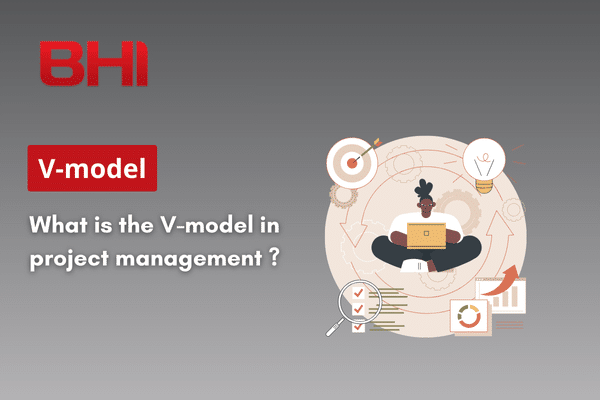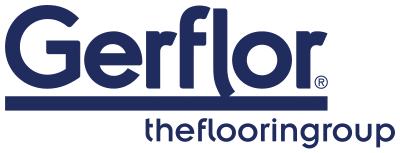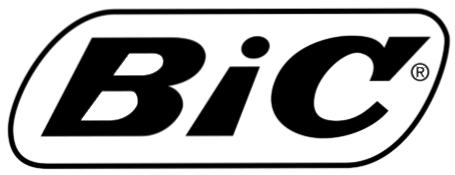In the world of project management, choosing the right methodology can make the difference between success and failure. The V-model represents one of the most structured and widespread approaches, particularly in sectors where rigor and traceability are essential. This methodology offers an organized framework that guides teams from conception to the final delivery of a project.
Whether you are a project manager, developer, or simply curious to understand the mechanisms that govern major technological projects, this guide will allow you to master the fundamental concepts of the V-model and determine if it suits your specific needs.
What is a Project Management Model ?
A project management model constitutes a methodological framework that structures the organization, planning and execution of a project. It defines the steps to follow, the expected deliverables, and the relationships between different phases. These models allow teams to work in a coordinated manner and achieve their objectives within the allotted timeframes.
The choice of the right model depends on numerous factors: the nature of the project, budget constraints, quality requirements, and the level of predictability required. Some projects benefit from flexible approaches, while others require a rigorous structure.
Origin of the V-Model
The V-model finds its origins in the software industry of the 1980s, developed as an evolution of the traditional waterfall model. Engineers found that complex projects required a more structured approach to manage testing and validation phases.
This methodology takes its name from its V-shaped graphical representation, where the descending branch illustrates the specification and development phases, while the ascending branch represents the testing and validation phases. This shape symbolizes the direct correspondence between each design phase and its corresponding verification phase.
Key Principles of the V-Model
Sequential Approach
The V-model follows sequential logic where each phase must be completely finished before moving to the next. This approach ensures that all aspects of the project are carefully planned and documented before the next step.
This sequentiality offers clear visibility on project progress and allows better estimation of necessary resources. However, it also implies that going backward can prove costly if significant modifications are necessary.
Importance of Validation and Verification
The particularity of the V-model lies in the systematic association of each development phase with a corresponding test phase. This approach guarantees that each developed element responds exactly to the specifications defined upstream.
Validation verifies that the final product meets user needs, while verification ensures that each component respects its technical specifications. This double verification considerably reduces error risks and improves the final product quality.
The Different Phases of the V-Model
Specification Phase
Requirements Definition
The first step consists of identifying and precisely formalizing the needs of end users. This phase involves in-depth interviews with stakeholders, analysis of existing systems, and clear definition of objectives to achieve.
Good requirements definition constitutes the foundation of the entire project. It must be sufficiently detailed to avoid ambiguities, while remaining comprehensible for all involved actors. This step largely determines the success or failure of the final project.
Functional Requirements Document
The functional requirements document translates identified needs into precise technical specifications. It describes what the system must do, without yet worrying about how it will be realized. This document serves as a contractual reference between development teams and sponsors.
A well-written requirements document includes expected functionalities, technical constraints, performance criteria, and acceptance conditions. It must be sufficiently precise to allow reliable estimation of costs and deadlines.
Design Phase
High-Level Design
High-level design defines the global system architecture and identifies the main modules or components. This phase translates functional specifications into a coherent technical structure, defining interfaces between different elements.
This step requires an overall project vision and good understanding of technical constraints. Architectural choices made at this level directly influence the ease of development, maintenance, and future system evolution.
Detailed Design
Detailed design deepens each module identified during high-level design. It specifies algorithms to use, data structures, and detailed interfaces between components. This phase produces specifications sufficiently precise to allow effective development.
This step often represents the last moment when major architectural modifications can be made without significant cost impact. Careful detailed design greatly facilitates developers’ work and reduces error risks.
Development Phase
The development phase translates detailed specifications into code or physical product. This step involves programming, component assembly, and creation of elements defined during previous phases.
Development strictly follows established specifications, without deviating from validated architectural choices. This discipline guarantees final product consistency and facilitates subsequent testing phases. Any modification requires formal documentation updates.
Testing Phase
Unit Testing
Unit tests verify the proper functioning of each component individually. They ensure that each module respects its detailed specifications and functions correctly in isolation. These tests are generally performed by the developers themselves.
This step allows rapid detection and correction of programming errors before component integration. It corresponds directly to the detailed design phase in the descending branch of the V.
Integration Testing
Integration tests verify that different modules function correctly together. They validate interfaces between components and ensure that assembly respects the architecture defined during high-level design.
This phase often reveals communication problems between modules or interface incompatibilities. It requires a progressive approach, integrating components by coherent groups rather than all simultaneously.
System Testing
System tests validate the global functioning of the product in its usage environment. They verify that the whole responds to functional specifications defined in the requirements document and that expected performances are achieved.
This step tests the complete system under conditions close to real usage. It includes performance, security, and robustness tests. Results allow validation of product conformity to initial requirements.
Acceptance Testing
Acceptance tests constitute final validation by users or their representatives. They verify that the product effectively responds to initially expressed needs and that users can use it efficiently in their professional context.
This phase often involves end users in real usage scenarios. It validates not only technical aspects, but also ergonomics and product adequacy to users’ business processes.
Advantages of the V-Model
Rigor and Clarity
The V-model imposes a structured approach that guarantees all project aspects are carefully planned and documented. This rigor reduces risks of oversights or misunderstandings and facilitates teamwork on complex projects.
Documentation produced at each step constitutes a solid base for following phases and facilitates subsequent product maintenance. This methodical approach reassures clients and teams, particularly on critical or regulated projects.
Requirements Tracking
Direct correspondence between specification phases and test phases guarantees complete requirements traceability. Each initially expressed need can be followed up to its final validation, ensuring nothing is forgotten along the way.
This traceability also facilitates change management and allows precise evaluation of each modification’s impact on the entire project. It constitutes a major asset for projects subject to strict regulatory constraints.
Upstream Risk Reduction
Significant investment in specification and design phases allows identification and resolution of potential problems before they become costly. This preventive approach significantly reduces risks of budget overruns or major delays.
Systematic validation of each phase before moving to the next avoids error accumulation that could compromise the entire project. This discipline, although constraining, effectively protects against project failures.
Disadvantages of the V-Model
Lack of Flexibility
The sequential nature of the V-model makes it difficult to account for significant modifications once the project is launched. Any change potentially requires resuming several already validated phases, which can prove very costly.
This rigidity poses problems in environments where needs evolve rapidly or are not completely known at startup. Innovative or exploratory projects may suffer from this overly structured approach.
High Costs in Case of Late Modification
Any error or modification discovered late in the cycle requires going back to the concerned phase and resuming all following steps. These backward movements generate exponential costs and can compromise the project’s economic viability.
This characteristic makes the V-model particularly vulnerable to initial analysis errors or unpredictable environmental changes. It requires considerable investment in upstream phase quality.
Limited Adaptability to Agile Projects
The sequential approach of the V-model accommodates poorly with agile methods that favor continuous adaptation and frequent deliveries. This incompatibility can create tensions in organizations adopting mixed approaches.
Projects requiring strong user interaction or continuous adaptation to market feedback find it difficult to fit into this rigid methodological framework. The absence of intermediate feedback can lead to products unsuited to real needs.
Comparison between V-Model and Agile Methods
Fundamental Differences
The V-model favors exhaustive planning and predictability, while agile methods favor adaptation and reactivity. These two philosophies respond to different contexts and needs, without either being universally superior.
The main difference lies in uncertainty management: the V-model seeks to reduce it through thorough upstream analysis, while agile accepts it and adapts continuously. This fundamental distinction influences all project management aspects.
When to Choose One or the Other ?
The V-model is particularly suitable for projects where requirements are stable and well-defined, where quality and compliance are critical, and where late modification costs are prohibitive. Regulated sectors, heavy industry, or critical systems benefit from this approach.
Agile methods impose themselves in uncertain environments, innovative projects, or when frequent user interaction is essential. Development of consumer digital products or exploratory projects find their efficiency in these flexible approaches.
Applications in Different Sectors
Information Technology
In the IT sector, the V-model remains relevant for critical systems, embedded software, or applications requiring certification. Banking systems, medical software, or security applications benefit from this rigorous approach.
IT projects using the V-model generally produce robust and well-documented systems, facilitating long-term maintenance. This approach also reassures institutional clients accustomed to formalized processes.
Automotive Industry
The automotive industry widely uses the V-model for developing embedded systems and critical components. Vehicle safety and regulatory constraints impose a methodical and traceable approach.
Development of driver assistance systems, engines, or braking systems typically follows this methodology. Correspondence between specifications and tests also facilitates mandatory certification processes.
Aerospace and Space
Aerospace and space sectors represent the V-model’s domain of excellence. Safety stakes, budget constraints, and reliability requirements impose an ultra-rigorous approach that this methodology satisfies perfectly.
Development of aircraft, satellites, or navigation systems systematically follows this approach. Validation phases are particularly critical and benefit from the V-model’s formal structure.
Healthcare and Medical Devices
The medical sector massively adopts the V-model for developing medical devices and health software. Regulatory constraints, notably FDA in the United States or CE marking in Europe, naturally align with this methodology.
Development of pacemakers, medical imaging equipment, or hospital information systems follows this approach. Traceability offered by the V-model facilitates approval processes and post-market surveillance.
Concrete Example
Software Project
Consider developing a hospital management system. The requirements analysis phase involves doctors, nurses, and administrators to precisely define required functionalities. The functional requirements document then details patient management, scheduling, and billing processes.
High-level design defines technical architecture, databases, and user interfaces. Detailed design specifies each module, processing algorithms, and communication protocols. Development then produces code according to these specifications.
Unit tests verify each function individually, integration tests validate data exchanges between modules, system tests confirm overall performance, and acceptance tests involve future users in real hospital usage scenarios.
Physical Product Development
Take the example of developing a new electric vehicle model. Requirements analysis studies consumer expectations, environmental constraints, and regulatory requirements. The requirements document defines target autonomy, performance, and equipment.
High-level design establishes vehicle architecture, technology choices, and different system integration. Detailed design specifies each component, from battery to embedded electronic systems.
The development phase produces prototypes and launches component production. Tests follow the same logic: validation of each part, assembly tests, complete vehicle trials, and finally validation by future users on road.
Best Practices
Complete Documentation
V-model success largely relies on documentation quality produced at each step. This documentation must be precise, complete, and maintained up-to-date throughout the project. It constitutes the base for all validations and facilitates subsequent maintenance.
Effective documentation uses recognized standards, formats accessible to all actors, and rigorous versioning systems. Investment in collaborative tools and review processes significantly improves documentary quality.
Clear Communication
The sequential nature of the V-model requires particularly careful communication between different teams and phases. Misunderstandings or omissions can have significant consequences on following phases and compromise the entire project.
Formal end-of-phase reviews, regular steering committees, and shared communication tools facilitate this coordination. Stakeholder involvement in validations also reinforces deliverable quality.
Proactive Risk Management
Although the V-model naturally reduces certain risks through its methodical approach, proactive risk management remains essential. Early identification of potential difficulties allows planning adaptation and preparation of workaround solutions.
This management includes analysis of technical, organizational, and external risks at each phase. Mitigation plans must be prepared and regularly updated according to project context evolution.
V-Model vs Waterfall Model
The waterfall model represents the V-model’s ancestor, with a purely sequential approach without formalized validation phases. The V-model enriches this approach by adding systematic correspondence between development and validation.
This evolution significantly improves deliverable quality by imposing systematic verification of each phase. The V-model also offers better visibility on real project progress through its clearly defined validation milestones.
Both approaches share the same sequential philosophy but the V-model brings validation discipline that considerably reduces drift risks. This difference largely justifies V-model adoption in projects where quality is critical.
Supporting Tools
Effective V-model implementation relies on tools adapted to each phase. Requirements management tools allow tracing needs from their initial expression to their final validation. Modeling software facilitates architecture design and documentation.
Document management platforms centralize and version all project deliverables. Planning and monitoring tools allow progress monitoring and early detection of potential drifts.
Testing and validation solutions automate certain verifications and guarantee control repeatability. These tools, well integrated, transform the V-model’s apparent heaviness into real operational efficiency.
Future Developments and V-Model Relevance Today
Despite the emergence of agile methodologies, the V-model maintains all its relevance in numerous contexts. Regulated sectors, critical projects, and developments requiring high predictability continue to benefit from this proven approach.
Current evolution tends toward hybrid approaches that combine V-model rigor with agile method flexibility. These adaptations allow preserving benefits of each approach according to specific needs of each phase or project component.
Integration of new technologies like artificial intelligence or test automation reinforces V-model efficiency by reducing its administrative burden while preserving its methodological rigor.
Conclusion
The V-model remains a reference methodology for projects requiring rigor, traceability, and predictability. Its formal structure, although demanding, offers a secure framework for complex or critical projects where error is not permitted.
The choice to adopt this approach must rely on precise analysis of project context, organizational constraints, and quality requirements. Well mastered and adapted to each situation’s specificities, the V-model constitutes a powerful tool for successfully completing the most demanding projects.
The key to success lies in intelligent adaptation of its principles to field realities, without compromising its fundamental philosophy of systematic validation. This balanced approach allows fully benefiting from V-model advantages while minimizing its constraints.
Ready to Master the V-Model for Your Critical Projects ?
The success of your complex projects requires a proven methodology and expert support. Whether you develop critical systems, regulated products, or wish to structure your development processes, the V-model offers the rigorous framework you need.
For in-depth expertise and personalized support in V-model implementation within your organization, discover how we can guide you in this methodological transformation. Our expert team accompanies you at each step from analysis of your specific needs to complete team training, including methodology adaptation to your context and appropriate tool implementation. Contact us to transform this methodological rigor into competitive advantage for your most demanding projects.
















